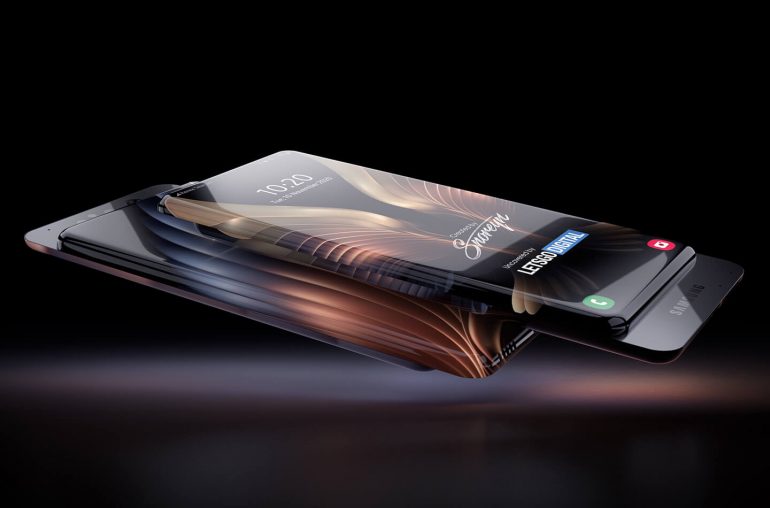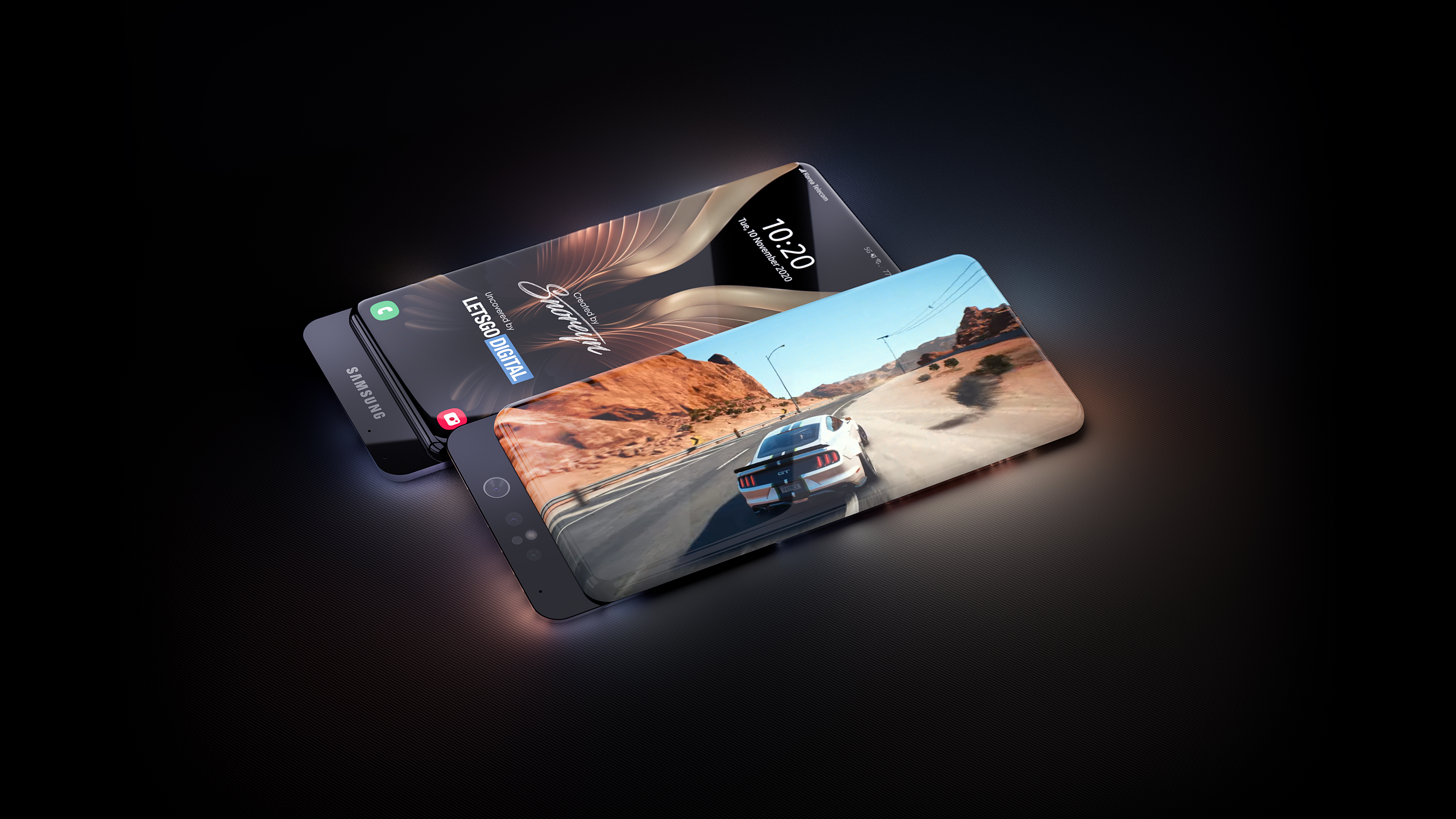Forget Galaxy S21 — Samsung’s 'surround display' phone looks incredible
Samsung's screen-covered phone and sliding cameras is like nothing we've seen before

Samsung is currently preparing for the Galaxy S21 launch, which is rumored to take place in January next year. But elsewhere in the company, its designers have been working on something really special.
LetsGoDigital, with the help of renders made by Giuseppe "Snoreyn" Spinelli, have found a new patent from Samsung that shows off an idea for a phone with a "surround display" on the front, back and around the edges. This display can also slide to reveal the phone's camera.
- Samsung Galaxy S21 release date, price specs and leaks
- The best Black Friday deals right now
- Hurry! iPhone 11 just hit lowest price ever
The patent has the simple name of "Electronic device," and was awarded to Samsung at the end of October. The design resembles Xiaomi's Mi Mix Alpha somewhat, but it's a lot more complicated.
Foldables are currently the only real way we see new flexible displays being utilized. However, Samsung is proposing similar technology to what we see on the Galaxy Z Flip and Galaxy Z Fold 2 in this patent.
One potential implementation shows the phone using several displays to cover the surface, but another suggests making it all one continuous display. This would make the phone require less power, but use some versatility.

Over this display goes a transparent housing, made of either acrylic or polymer. Since it's seethrough, the display beneath can basically make the phone any color it wants, handy for notifications, showing weather conditions, or even for matching the display's colors to the environment.

The main components go within the ring of the display, with support structures making sure the panel and the silicon below it stay where they should. This includes an eSIM (since there's no room for a traditional nano-SIM slot), under-display fingerprint sensor and a piezoelectric sensor that acts as the power button.
Sign up to get the BEST of Tom's Guide direct to your inbox.
Get instant access to breaking news, the hottest reviews, great deals and helpful tips.
Similar to the Z Fold, which can swap apps between a cover display and main display version depending on what the user is doing, Samsung intends for content to seamlessly move to follow the device's orientation.

The sliding mechanism has been tried on phones before such as Xiaomi's Mi Mix 3, but resulted in a much heavier phone. Still, it didn't require a notch or punch-hole for the selfie camera.
In the case of this concept, the rear of the phone moves down to reveal a camera array on the back of the front portion of the phone. Since you have the rear display, this means a single set of sensors can act as both selfie and rear cameras, something we've seen on foldables like the Huawei Mate Xs.
There's also mention of an under-display camera on the front of the phone. This isn't for photography, unlike other under-display concepts that are being worked on by Samsung, Xiaomi, Oppo and others. It's instead designed to help the phone orient its content correctly, detecting the user's position and using the right displays accordingly.

When inactive, the phone can still have a screensaver on the main front or rear display, while the sides can be used for shortcuts. However both screens can work at once, for example to let multiple people watch a video without crowding over your shoulder, or to play some kind of mobile game. Alternatively, the two screens can display different information on a single topic. In the patent a video is shown playing on one side, while its metadata is visible on the other side.
Patents don't always become real products, and if they do it can take a while for a concept to be made into something users can actually buy. From the looks of this design, we'd be super happy if Samsung managed to make this a reality. And since Samsung's already dominating the foldables market, it's perhaps not too much to hope that it'll seek new smartphone horizons to conquer soon.

Richard is based in London, covering news, reviews and how-tos for phones, tablets, gaming, and whatever else people need advice on. Following on from his MA in Magazine Journalism at the University of Sheffield, he's also written for WIRED U.K., The Register and Creative Bloq. When not at work, he's likely thinking about how to brew the perfect cup of specialty coffee.
